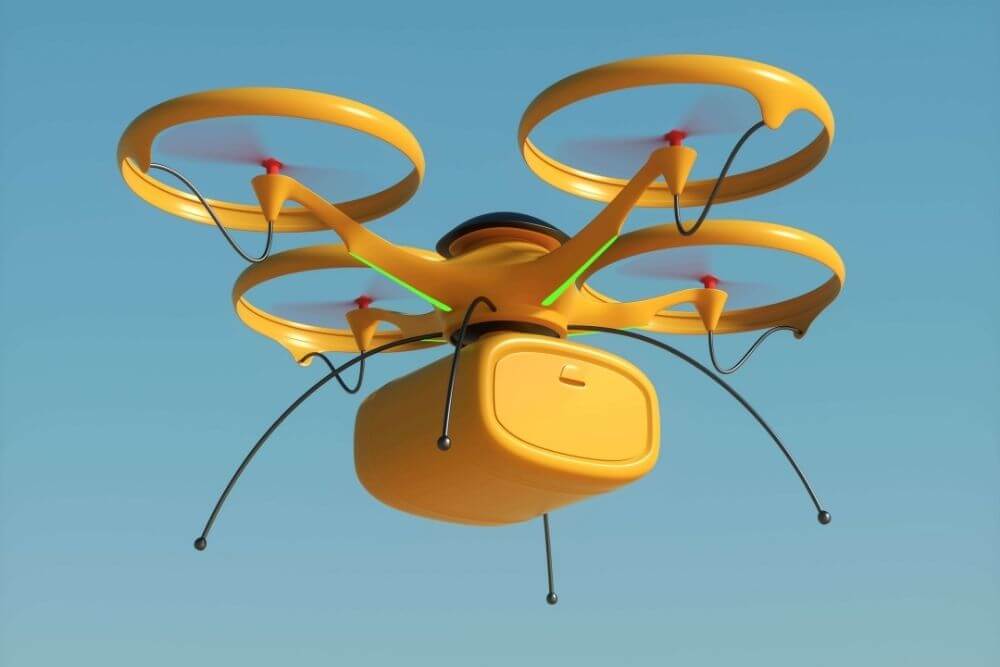
AI-Powered QR Codes: Next‑Gen Customization and Security Trends
Posted in :
Introduction: When Artificial Intelligence Meets QR Technology
The convergence of artificial intelligence and QR code technology is creating possibilities that seemed like science fiction just years ago. In 2025, AI-powered QR codes don’t just store information—they learn, adapt, and secure themselves in ways that fundamentally transform how we interact with digital content.
From QR codes that automatically optimize their design for maximum scannability to security systems that detect and prevent malicious attacks in real-time, artificial intelligence is elevating QR technology from simple data storage to intelligent, responsive digital interfaces.
This comprehensive exploration reveals how AI is reshaping QR code generation, customization, security, and applications across industries, setting the stage for a future where QR codes become truly intelligent communication tools.
The AI Revolution in QR Code Generation
Intelligent Design Optimization
Automated Scannability Enhancement AI algorithms analyze millions of QR code scans to identify optimal design patterns, error correction levels, and visual elements that maximize successful scan rates across different devices, lighting conditions, and user behaviors.
Modern AI systems can automatically adjust:
- Module size and spacing for optimal camera recognition
- Error correction levels based on intended use environment
- Color contrast ratios for accessibility compliance
- Pattern positioning for faster detection algorithms
Context-Aware Generation Machine learning models consider the intended use context when generating QR codes, optimizing for specific scenarios:
- Print Media: Higher error correction for potential print quality variations
- Digital Displays: Optimized contrast for screen viewing conditions
- Product Packaging: Durability considerations for manufacturing processes
- Outdoor Signage: Weather resistance and distance scanning optimization
Predictive Performance Analytics
Scan Success Prediction AI models can predict the likelihood of successful QR code scans before deployment by analyzing:
- Visual complexity and pattern density
- Environmental deployment conditions
- Target audience device preferences
- Historical performance data from similar implementations
Usage Pattern Forecasting Machine learning algorithms analyze historical QR usage data to predict:
- Peak scanning times and traffic patterns
- Geographic usage distribution
- Device type preferences by demographic
- Seasonal engagement variations
Next-Generation Customization Through AI
Intelligent Brand Integration
Automated Logo Placement AI systems analyze brand logos and automatically determine optimal placement within QR codes while maintaining scannability. Advanced algorithms consider:
- Logo complexity and color palette
- Brand recognition requirements
- Scanning reliability thresholds
- Visual hierarchy and aesthetic balance
Dynamic Brand Adaptation AI-powered QR systems can automatically adjust branding elements based on context:
- Seasonal Campaigns: Automatic color scheme updates for holidays
- Geographic Targeting: Cultural sensitivity adjustments for international markets
- Audience Segmentation: Age-appropriate design modifications
- Platform Optimization: Social media vs. print format adaptations
Personalized User Experiences
Individual Customization Advanced AI systems create personalized QR experiences by analyzing user behavior patterns:
- Learning Preferences: Adapting content delivery based on past interactions
- Device Optimization: Customizing experiences for specific device capabilities
- Accessibility Needs: Automatic adjustments for visual or motor impairments
- Language Detection: Automatic localization based on user location and preferences
Behavioral Adaptation Machine learning models continuously refine QR experiences based on user feedback:
- Scan Success Rates: Automatic design adjustments to improve functionality
- Engagement Metrics: Content optimization based on user interaction patterns
- Conversion Analysis: Landing page optimization through AI-driven testing
- User Journey Mapping: Predictive content delivery for enhanced experiences
Creative AI Generation
Artistic QR Code Creation Generative AI models create aesthetically pleasing QR codes that maintain functionality while achieving artistic vision:
- Style Transfer: Applying artistic styles while preserving data integrity
- Pattern Generation: Creating unique visual patterns within QR structures
- Color Harmony: Intelligent color selection for brand consistency and scannability
- Typography Integration: Seamless text incorporation without functionality loss
Content-Aware Design AI analyzes the content being encoded to generate contextually appropriate visual designs:
- Restaurant Menus: Food-themed visual elements and appetite-appealing colors
- Event Tickets: Genre-appropriate aesthetics and mood-setting designs
- Educational Content: Learning-friendly colors and accessibility considerations
- Healthcare Information: Trust-building design elements and calming aesthetics
Advanced Security Through Machine Learning
Threat Detection and Prevention
Real-Time Malware Scanning AI-powered security systems continuously monitor QR code destinations for malicious content:
- URL Analysis: Machine learning models identify suspicious domain patterns
- Content Inspection: Automated scanning of landing pages for malware
- Behavioral Analysis: Detection of abnormal traffic patterns indicating attacks
- Reputation Scoring: Dynamic risk assessment based on historical data
Phishing Protection Advanced AI algorithms detect and prevent QR-based phishing attempts:
- Domain Spoofing Detection: Identification of fraudulent websites mimicking legitimate brands
- Visual Similarity Analysis: Detection of fake QR codes designed to steal credentials
- Social Engineering Recognition: Analysis of content for manipulation tactics
- User Warning Systems: Intelligent alerts when suspicious patterns are detected
Encryption and Authentication
Dynamic Encryption AI systems automatically select optimal encryption methods based on:
- Content Sensitivity: Higher encryption for financial or medical information
- Geographic Requirements: Compliance with regional data protection laws
- User Risk Profiles: Enhanced security for high-value targets
- Threat Level Assessment: Adaptive security based on current threat landscape
Biometric Integration Machine learning enables sophisticated authentication through QR interactions:
- Facial Recognition: Secure access control through AI-powered identity verification
- Voice Authentication: Integration with voice recognition for hands-free security
- Behavioral Biometrics: Analysis of scanning patterns for user identification
- Multi-Factor Authentication: Intelligent combination of security methods
Fraud Prevention
Pattern Recognition AI systems identify fraudulent QR code activities through advanced pattern analysis:
- Scanning Behavior Analysis: Detection of bot networks and automated attacks
- Geographic Anomalies: Identification of impossible usage patterns
- Temporal Irregularities: Recognition of suspicious timing patterns
- Cross-Reference Validation: Verification against known fraud databases
Blockchain Integration AI-enhanced blockchain systems provide immutable QR code verification:
- Authenticity Verification: Cryptographic proof of QR code legitimacy
- Tamper Detection: Automated identification of modified or counterfeit codes
- Supply Chain Tracking: AI-powered verification of product authenticity
- Digital Rights Management: Intelligent protection of intellectual property
Industry Applications and Case Studies
Healthcare: Intelligent Patient Care
AI-Powered Medical Records Healthcare systems use AI-enhanced QR codes for intelligent patient information management:
- Smart Access Control: Automatic verification of healthcare provider credentials
- Risk Assessment: AI analysis of patient data to prioritize emergency responses
- Treatment Optimization: Machine learning recommendations based on medical history
- Privacy Protection: Dynamic encryption based on information sensitivity levels
Case Study: Mayo Clinic’s AI QR System The Mayo Clinic implemented AI-powered QR codes that automatically adapt patient information display based on the healthcare provider’s role and security clearance, reducing data exposure while improving care coordination.
Results:
- 78% reduction in unauthorized data access incidents
- 45% improvement in patient information retrieval speed
- 92% healthcare provider satisfaction with intelligent access control
- $2.8 million annual savings from reduced security breaches
Finance: Secure Transaction Processing
Intelligent Payment Systems Financial institutions leverage AI-enhanced QR codes for secure transaction processing:
- Fraud Detection: Real-time analysis of transaction patterns for suspicious activity
- Risk Scoring: Dynamic assessment of transaction risk based on multiple factors
- Adaptive Authentication: AI-powered selection of appropriate security measures
- Regulatory Compliance: Automatic adherence to financial regulations across jurisdictions
Case Study: Singapore’s DBS Bank AI QR Platform DBS Bank deployed AI-powered QR payment systems that automatically adjust security protocols based on transaction amount, user behavior patterns, and current threat levels.
Impact:
- 94% reduction in QR-based payment fraud
- 67% faster transaction processing times
- 89% customer satisfaction with seamless security experience
- 156% increase in QR payment adoption rates
Retail: Personalized Shopping Experiences
AI-Driven Product Recommendations Retail brands use intelligent QR systems for personalized customer experiences:
- Behavioral Analysis: Machine learning insights into shopping preferences
- Inventory Integration: Real-time product availability and alternative suggestions
- Price Optimization: Dynamic pricing based on demand patterns and customer segments
- Loyalty Enhancement: Personalized rewards and offers through AI analysis
Case Study: Zara’s AI Fashion Advisor Zara implemented AI-powered QR codes that analyze customer style preferences and provide personalized fashion recommendations based on purchase history, browsing behavior, and current trends.
Outcomes:
- 73% increase in cross-selling success rates
- 41% improvement in customer lifetime value
- 58% reduction in return rates through better size recommendations
- 234% growth in repeat customer engagement
Manufacturing: Smart Supply Chain
Intelligent Quality Control Manufacturing companies deploy AI-enhanced QR systems for automated quality assurance:
- Defect Prediction: Machine learning models identify potential quality issues
- Process Optimization: AI-driven recommendations for manufacturing improvements
- Traceability Enhancement: Intelligent tracking of products through supply chains
- Compliance Monitoring: Automated verification of regulatory requirements
Case Study: Toyota’s AI Quality System Toyota uses AI-powered QR codes throughout their manufacturing process to predict quality issues, optimize production parameters, and ensure consistent product excellence.
Achievements:
- 87% reduction in quality defects through predictive analysis
- 52% improvement in production efficiency
- 96% automated compliance verification accuracy
- $45 million annual savings from quality improvements
Technical Implementation and Architecture
AI Model Development
Training Data Requirements Successful AI-powered QR systems require comprehensive training datasets:
- Scan Success Data: Millions of QR interactions across different conditions
- Security Incident Reports: Historical attack patterns and threat intelligence
- User Behavior Analytics: Interaction patterns and preference data
- Performance Metrics: Success rates across various implementation scenarios
Model Architecture Considerations AI QR systems utilize sophisticated neural network architectures:
- Convolutional Networks: For image processing and visual pattern recognition
- Recurrent Networks: For temporal pattern analysis and behavior prediction
- Transformer Models: For natural language processing and content analysis
- Ensemble Methods: Combining multiple AI approaches for robust performance
Infrastructure and Scalability
Cloud-Native Deployment Modern AI QR systems leverage cloud infrastructure for scalability:
- Microservices Architecture: Modular components for flexible deployment
- Auto-Scaling Capabilities: Dynamic resource allocation based on demand
- Global Distribution: Edge computing for reduced latency worldwide
- Fault Tolerance: Redundant systems ensuring continuous availability
Real-Time Processing Requirements AI-powered QR systems demand sophisticated processing capabilities:
- Sub-Second Response Times: Instant AI analysis and decision-making
- Concurrent Processing: Handling millions of simultaneous QR interactions
- Memory Optimization: Efficient resource utilization for complex AI models
- Bandwidth Management: Optimized data transfer for mobile environments
Integration Challenges and Solutions
Legacy System Compatibility Implementing AI QR solutions requires careful integration planning:
- API Development: Standardized interfaces for system connectivity
- Data Migration: Secure transfer of existing QR data to AI-enhanced platforms
- User Training: Education programs for staff adapting to intelligent systems
- Gradual Deployment: Phased rollouts to minimize operational disruption
Privacy and Compliance AI QR systems must address complex privacy requirements:
- Data Minimization: AI models trained on anonymized, aggregated data
- Consent Management: Intelligent systems for user permission handling
- Regulatory Compliance: Automated adherence to GDPR, CCPA, and other regulations
- Transparency Requirements: Explainable AI for regulatory and user understanding
Future Trends and Innovations
Quantum-Enhanced Security
Quantum-Resistant Encryption As quantum computing advances, AI QR systems are preparing for quantum-resistant security:
- Post-Quantum Cryptography: Implementation of quantum-safe encryption algorithms
- Hybrid Security Models: Combining classical and quantum-resistant approaches
- Dynamic Algorithm Selection: AI-powered choice of optimal encryption methods
- Future-Proof Architecture: Systems designed for easy quantum security upgrades
Edge Computing Integration
Distributed AI Processing Future AI QR systems will leverage edge computing for enhanced performance:
- Local Processing: AI analysis performed on user devices for privacy and speed
- Reduced Latency: Instant responses through local AI model deployment
- Offline Functionality: Intelligent QR processing without internet connectivity
- Privacy Enhancement: Sensitive data processing without cloud transmission
Augmented Reality Convergence
AI-Powered AR Experiences The integration of AI, QR codes, and augmented reality creates new possibilities:
- Contextual Content Delivery: AI-selected AR experiences based on user preferences
- Real-Time Object Recognition: Enhanced AR through AI-powered visual analysis
- Personalized Virtual Interactions: Customized AR content through machine learning
- Predictive Experience Design: AI anticipation of user needs in AR environments
Voice and Conversational Interfaces
Natural Language Integration AI enables sophisticated voice interactions through QR code scanning:
- Voice-Activated Scanning: Hands-free QR code interaction through AI voice recognition
- Conversational Queries: Natural language questions about QR content
- Multilingual Support: AI-powered real-time translation and localization
- Accessibility Enhancement: Voice interfaces for visually impaired users
Implementation Strategy and Best Practices
Planning and Development
Requirements Analysis Successful AI QR implementation begins with comprehensive planning:
- Use Case Definition: Clear identification of AI-enhanced functionality needs
- Performance Targets: Specific metrics for AI system effectiveness
- Security Requirements: Threat modeling and protection strategy development
- Scalability Planning: Architecture design for future growth and expansion
Pilot Program Development Strategic implementation through controlled testing environments:
- Limited Scope Testing: Initial deployment with specific user groups
- Performance Monitoring: Comprehensive analytics during pilot phases
- User Feedback Integration: Continuous improvement based on real-world usage
- Iterative Enhancement: Regular model updates and feature refinements
Ethical Considerations
Responsible AI Development AI QR systems must address ethical implications:
- Bias Prevention: Training data diversity and algorithmic fairness
- Transparency Requirements: Clear communication about AI decision-making
- User Agency: Maintaining human control over AI-powered interactions
- Social Impact Assessment: Consideration of broader societal implications
Privacy-First Design Ethical AI QR systems prioritize user privacy:
- Data Minimization: Collection of only necessary information for AI functionality
- Purpose Limitation: AI processing restricted to stated use cases
- User Control: Granular privacy settings and opt-out capabilities
- Regular Auditing: Ongoing assessment of privacy protection effectiveness
Getting Started with AI-Powered QR Technology
Evaluation Framework
Assessing AI Readiness Organizations should evaluate their readiness for AI-enhanced QR systems:
- Data Infrastructure: Availability of quality training and operational data
- Technical Expertise: In-house AI development and maintenance capabilities
- Budget Considerations: Investment requirements for AI system development
- Strategic Alignment: Consistency with organizational digital transformation goals
Vendor Selection Criteria
Key Evaluation Factors When selecting AI QR platform providers, consider:
- AI Model Sophistication: Advanced machine learning capabilities and performance
- Security Features: Comprehensive threat protection and compliance support
- Customization Options: Flexibility for organization-specific requirements
- Support and Maintenance: Ongoing AI model updates and technical assistance
Implementation Roadmap
Phased Deployment Strategy Successful AI QR implementation follows structured phases:
Phase 1: Foundation Building
- Infrastructure assessment and preparation
- Data collection and quality assurance
- Basic AI model training and validation
- Security framework establishment
Phase 2: Pilot Deployment
- Limited scope AI QR system launch
- User experience testing and refinement
- Performance monitoring and optimization
- Stakeholder feedback integration
Phase 3: Scale and Enhancement
- Full production deployment
- Advanced AI feature activation
- Continuous learning and improvement
- Expansion to additional use cases
Conclusion: The Intelligent Future of QR Technology
AI-powered QR codes represent more than technological advancement—they embody a fundamental shift toward intelligent, adaptive digital interactions that learn, secure, and optimize themselves in real-time. As we’ve explored throughout this analysis, the convergence of artificial intelligence and QR technology is creating unprecedented opportunities for enhanced user experiences, robust security, and operational efficiency.
The success stories across healthcare, finance, retail, and manufacturing demonstrate that AI-enhanced QR systems deliver measurable value through improved security, personalized experiences, and intelligent automation. Organizations implementing these technologies report significant improvements in user satisfaction, operational efficiency, and security posture.
Looking ahead, the continued evolution of AI capabilities—from quantum-resistant security to edge computing integration—promises even more sophisticated QR applications that will further transform how we interact with digital information in physical environments.
Ready to explore the future of QR technology? While AI-powered features represent the cutting edge of QR innovation, building familiarity with QR fundamentals remains essential. Start your journey with QRCodeMyURL.com to understand core QR functionality before implementing advanced AI-enhanced solutions.
Begin Your QR Innovation Journey →
Advanced Resources and Further Reading
- AI QR Implementation Playbook – Comprehensive guide for technical teams and decision-makers
- Security Framework for AI QR Systems – Best practices for protecting AI-enhanced QR implementations
- ROI Calculator for AI QR Investments – Financial modeling tools for AI QR project planning
- Industry Case Study Collection – Detailed analysis of successful AI QR deployments across sectors
- Technical Architecture Patterns – Reference designs for scalable AI QR system development
Disclaimer: This analysis represents current trends and projections in AI QR technology. Specific AI capabilities and implementation requirements may vary by vendor and use case. Organizations should conduct thorough evaluations before implementing AI-enhanced QR systems.

